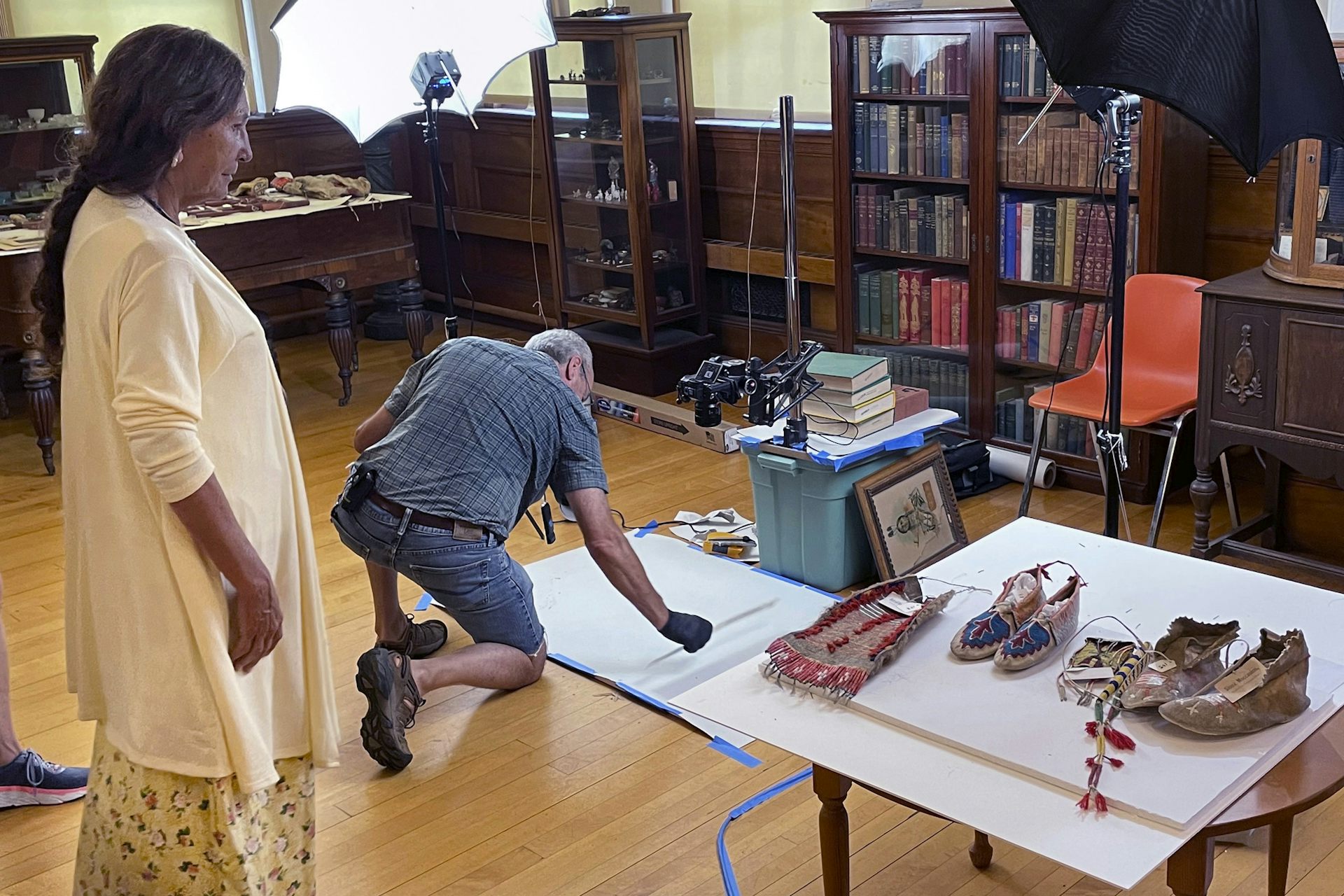Welcome to DU!
The truly grassroots left-of-center political community where regular people, not algorithms, drive the discussions and set the standards.
Join the community:
Create a free account
Support DU (and get rid of ads!):
Become a Star Member
Latest Breaking News
Editorials & Other Articles
General Discussion
The DU Lounge
All Forums
Issue Forums
Culture Forums
Alliance Forums
Region Forums
Support Forums
Help & Search
First Americans
Related: About this forumRepatriation to Indigenous groups is more than law, it's human rights − an archaeologist describes the day that lesson h
Repatriation to Indigenous groups is more than law, it’s human rights − an archaeologist describes the day that lesson hit homePublished: February 12, 2025 8:51am EST

Leola One Feather of the Oglala Sioux Tribe observes as Native American artifacts are photographed at the Founders Museum in Barre, Mass., in 2022, before their return. AP Photo/Philip Marcelo
As an archaeologist, you picture yourself traveling to some remote location, digging into the ground, and returning to a lab in a university or museum to study the remains of past civilizations, with hopes of answering important questions.
In contrast, I’ve often found myself working to return those remains to their rightful cultures. Repatriation is the process of returning ancestral human remains and important objects to descendant populations. Since the passing of the National Museum of the American Indian Act in 1989 and the Native American Graves Protection and Repatriation Act in 1990, it has become an increasingly important part of archaeological practice, yet about 110,000 ancestors remain in collections.
This work is about more than legal obligations. To many researchers such as myself, it is a matter of human rights.
When first enacted, these laws were controversial among archaeologists. Much of this anxiety stemmed from worries about losing access to research opportunities. Some concerns were shaped by legal battles surrounding the remains of “Kennewick Man,” whom Indigenous people refer to as the “Ancient One.” This man’s remains were found in Washington state in 1996 and dated to over 8,000 years ago. Scientists won the legal right to study them, in opposition to local tribal nations’ requests, until a 2016 law returned the remains of the individual to those groups.
Over time, many archaeologists have seen that while repatriation requirements limit research in some ways, in others they have been beneficial and improved aspects of archaeologists’ relationships with Indigenous communities.
More importantly, repatriation laws have served as a partial remedy for the historical trauma of those peoples.
This is not an idea I was exposed to as a graduate student. Like many others in my field, I had virtually no exposure to the actual process of repatriation, even more than a decade after the Native American Graves Protection and Repatriation Act, called NAGPRA, was signed into law. Rather, it is one that developed while I served as a repatriation archaeologist for the Smithsonian National Museum of Natural History from 2009-2011, and in the following years as a professor of archaeology.
We believe in the free flow of information
Republish our articles for free, online or in print, under a Creative Commons license.
More:
https://theconversation.com/repatriation-to-indigenous-groups-is-more-than-law-its-human-rights-an-archaeologist-describes-the-day-that-lesson-hit-home-247763
2 replies
 = new reply since forum marked as read
Highlight:
NoneDon't highlight anything
5 newestHighlight 5 most recent replies
= new reply since forum marked as read
Highlight:
NoneDon't highlight anything
5 newestHighlight 5 most recent replies
Repatriation to Indigenous groups is more than law, it's human rights − an archaeologist describes the day that lesson h (Original Post)
Judi Lynn
Feb 2025
OP
It was good to stumble across it and get to post it, niyad. Thanks for reading it.
Judi Lynn
Feb 2025
#2
niyad
(129,002 posts)1. Thank you so much for this most illuminating article.
Judi Lynn
(164,038 posts)2. It was good to stumble across it and get to post it, niyad. Thanks for reading it.